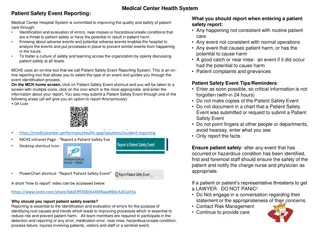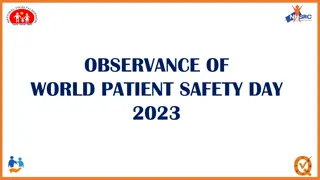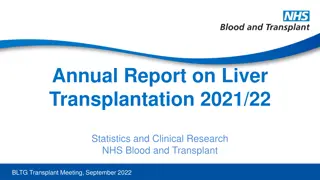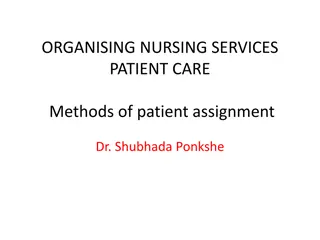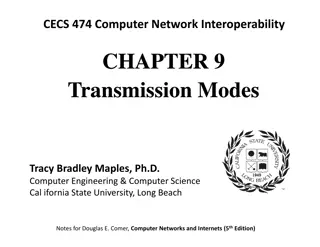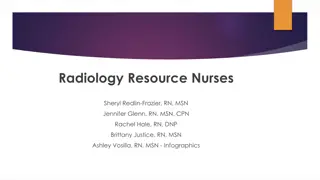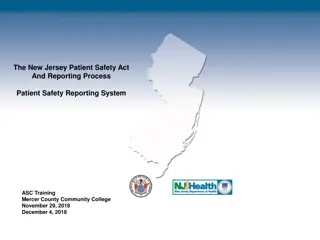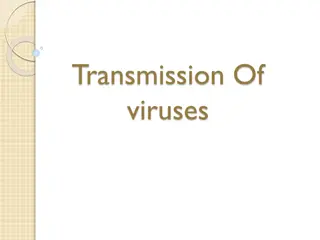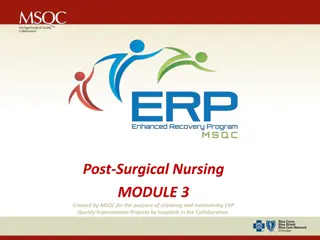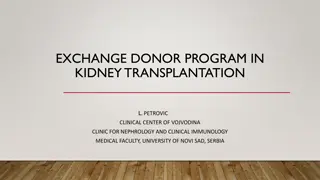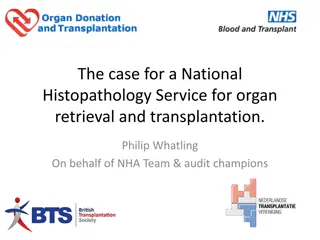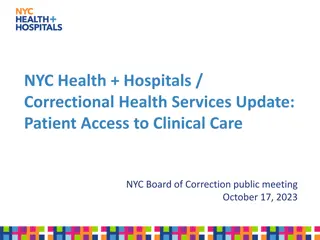Enhanced focus on patient safety and potential donor-derived transmission events
This update covers the work of the Ad Hoc Disease Advisory Committee (DTAC) since 2008, focusing on evaluating potential donor-derived transmission events to enhance patient safety. It includes case reviews, reporting trends, collaboration with the CDC, and input on emerging topics such as epidemics and fluid contamination.
Download Presentation

Please find below an Image/Link to download the presentation.
The content on the website is provided AS IS for your information and personal use only. It may not be sold, licensed, or shared on other websites without obtaining consent from the author.If you encounter any issues during the download, it is possible that the publisher has removed the file from their server.
You are allowed to download the files provided on this website for personal or commercial use, subject to the condition that they are used lawfully. All files are the property of their respective owners.
The content on the website is provided AS IS for your information and personal use only. It may not be sold, licensed, or shared on other websites without obtaining consent from the author.
E N D
Presentation Transcript
Ad Hoc Disease Advisory Committee Update Spring 2019 1
What is DTAC? Ad hoc committee with enhanced focus on patient safety since 2008 Examine unexpected potential donor-derived transmission events mainly consisting of infection or malignancy Determine if they are donor derived or not Evaluate aggregate data to enhance patient safety Inform policy change and improve existing processes Educate transplant community
CDC Collaboration If a Pathogen of Special Interest or a case of public health interest is reported OPTN/UNOS CDC CDC Transplant OPO Center
Reporting Trends/Case Volumes Number of cases reviewed and those with proven/probable transmission are relatively stable Community continues to use the reporting system appropriately 5
Reporting Trends/Case Volumes PDDTEs Reported during Jan 1, 2017 Dec 31, 2017 Unanticipated donor-derived infections are the most common transmission Proven/ Probable Transmissions Total Cases 182 Infection 37 33,514 individuals received transplants in 2017 Viral 70 16 Malignancy Other 73 17 5 5 Total 272 47 6
Reporting Trends/Case Volumes PDDTEs Reported During 2017, Ranked by Total Number of Reported Cases PDDTEs Reported During 2017, Ranked by Number of Cases Resulting in Proven/Probable Transmission Organism/ Condition Reports Proven/ Probable Transmissions Organism/ Condition Reports Proven/ Probable Transmissions 1. Renal Malignancy 28 3 1. HCV 26 9 2. Pseudomonas 5 5 2. HCV 26 9 3. Candida 10 4 3. Histoplasma 20 0 4. HBV 13 3 4. Strongyloides 15 0 5. Renal Malignancy 28 3 5. HBV 13 3 7
DTAC also provides input on other emerging topics Perfusion fluid contamination Emerging epidemics (e.g. Ebola and Zika) Hepatitis C/IVDU Epidemic 8
Upcoming News Modify HOPE Act to include Other Organs (Current, Spring 2019) Continued submission of manuscripts and abstracts New DTAC Quarterly Update via Transplant Pro 9
Please remember Reporting events leads to a greater number of successful transplants and prevented deaths. 10
Questions? 11
Reporting Trends/Case Volumes PDDTEs Reported during Jan 1, 2017 Dec 31, 2017 Total Cases Proven/ Probable Transmissions Unanticipated Donor-derived infections are the most common transmission Infections Viral 70 16 Fungal 51 6 Bacterial 28 12 33,514 individuals received transplants in 2017. Parasitic 21 2 Mycobacterial 12 1 Other 17 5 Malignancies 73 5 Other 17 5 Total 272 47 12


